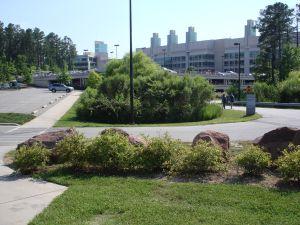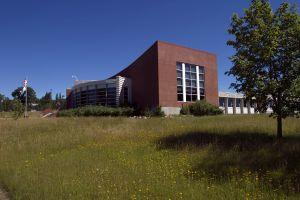Landscaping at EPA Facilities
In order to conserve water, EPA strives to eliminate water used for landscape irrigation. EPA facilities use native and low-water plant species, so very few facilities irrigate the landscape.
Projects

Landscaping at EPA’s campus in Research Triangle Park, North Carolina

Northern boreal meadow at EPA’s Mid-Continent Ecology Division Laboratory in Duluth, Minnesota
- EPA’s Research Triangle Park Main Campus in North Carolina was designed to have minimal impact on the native woodland landscape. Native and drought-tolerant plants were incorporated within the landscaped design, and no irrigation is required.
- The Great Lakes Toxicology and Ecology Division in Duluth, Minnesota, converted two acres of lawn in front of the laboratory to northern boreal meadow, native to northeastern Minnesota. No irrigation is required to maintain the meadow, and only occasional maintenance is needed to control exotic species and remove unwanted plants.
- The National Exposure Research Laboratory in Las Vegas, Nevada, took into account the extremely arid climate and replaced existing turf landscape with native plant species, such as cacti and succulents. Implementing these xeriscaping practices helped minimize the amount of water needed for landscaping.
In addition to these landscape irrigation water conservation projects, EPA is protecting pollinator habitats. Learn more about EPA’s pollinator habitat effort.
